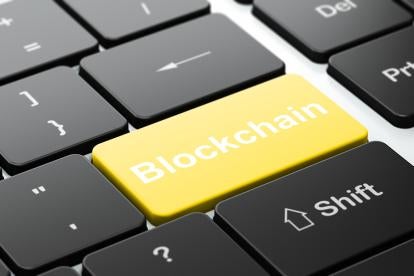By now, bitcoin has become a household name. The idea of a digital, unregulated “cryptocurrency” elicits strong responses. Some have heralded bitcoin as revolutionary. Others, like JP Morgan Chase CEO Jamie Dimon, have denounced it as a “fraud.” But in January of this year, Dimon walked that comment back, and declared that “the blockchain is real.” Why the clarification?
In essence, Dimon was arguing that, despite his misgivings about digital currencies, the technology behind them — the blockchain — is an actual (if less heralded) game changer for businesses. The comment underscores a crucial truth about bitcoin — that it represents a single “use case” amid a much larger and rapidly emerging ecosystem. Indeed, Chase has been a key proponent of blockchain’s operational potential in financial transactions.
This article will explore what blockchain technology is, and how it is influencing global supply networks.
What is blockchain?
The blockchain is a ledger that has certain attributes that make it attractive for doing business in a digital world.
Unlike most existing ledgers, a blockchain ledger is distributed and shared across a network. There is only one ledger and, thus, a single source of reliable information. In the world of blockchain, there are no “trusted third parties” or intermediaries like a bank or a broker. Instead, the participants on the network essentially police the system themselves and verify transactions through a process called consensus.
The mechanics of the consensus process vary depending on the application. In the bitcoin example, the system is public and the requirements for verification are more onerous. In other use cases, where the network may be private, the verification process may be less demanding.
In each case, the blockchain is designed to reward truth and transparency. Hijacking the blockchain is not easy, because a majority of participants would have to conspire to provide false information. Because the ledger is distributed and shared by an unlimited network of users, there is even greater visibility and auditability.
It’s not perfect, but over time there is a snowball effect made possible by the scalability of massive digital networks. Once a series of transactions is committed to a block, the creation of new blocks depends on the accuracy of the prior blocks. That process is repeated ad infinitum. In that way, the resulting “blockchain” is said to be virtually immutable and incorruptible.
What are blockchain’s advantages?
The advantages of a blockchain include speed, cost savings, data security, and privacy, among others.
Because the blockchain eliminates the need for multiple, competing ledgers, there is no need for expensive and time-consuming reconciliation.
The absence of trusted third parties also reduces settlement costs. Gone are the days where each intermediary expects a “cut” for facilitating a transaction. Instead, the system is largely self-sustaining and the ability to transfer information and even execute simplified contracts is unconstrained by traditional barriers.
The fact that the blockchain ledger is distributed and shared by a limitless network of users makes the underlying data less vulnerable because here is no central “honey pot” of information. While it might be possible in theory to alter one copy of the blockchain ledger, the likelihood that a bad actor could alter most copies of the distributed ledger is virtually nonexistent.
Finally, advances in digital cryptography make it possible to conceal certain data on the blockchain depending on the specific needs of the network.
How is blockchain technology influencing global supply networks?
If all of this sounds rarefied and speculative, it’s not. In fact, blockchain’s influence on global supply networks is already yesterday’s news. While these efforts may have received less media attention than bitcoin’s recent gyrations, the long-term disruptive effect may be even greater than any cryptocurrency.
As IBM’s Manav Gupta has explained:
Supply chains are prime examples of blockchain’s potential for transformation that spans industries. Initial blockchain efforts could have quick impact by transforming even a small portion of the supply chain, such as the information used during importing. If import terminals received data from bills of lading earlier in the process, terminals could plan and execute more efficiently and without privacy concerns. Blockchain technology could make appropriate data visible in near real-time (for example, the departure time and weight of containers) without sharing information about the owners or value of the cargo. Costly delays and losses due to missing paperwork could be avoided.
Examples of blockchain’s global supply chain use cases include the following:
-
In April of 2018, Samsung announced that it was considering the use of blockchain technology to cut its supply chain costs by nearly 20 percent. Among the cited benefits were reduced documentation costs for container shipments and better coordination with port authorities.
-
Walmart recently partnered with IBM to create a blockchain-based system for identifying and removing recalled foods. Walmart has stated that the time needed to find tracking information for particular foods was reduced from almost seven days to 2.2 seconds using blockchain technologies.
-
IBM’s TrustChain has been touted as a blockchain-based solution for tracing the origin of diamonds, “from mine to consumer.”
-
Similarly, a company called Provenance has successfully deployed blockchain technology to verify social sustainability claims in global food chains. In that pilot study, the company announced it was possible to trace the provenance of fish originating in southeast Asia.
-
A company called AXA has developed a blockchain-based platform for flight delay insurance. While the product is designed for consumers, the same principles could easily be applied to mitigate supply chain risks.
What’s next?
Blockchain is more than just bitcoin and digital currencies. As the above examples illustrate, blockchain offers a universal platform for services. Expect to see widespread adoption as businesses harness the power of blockchain to make their supply chains faster and more reliable.





 i
i

